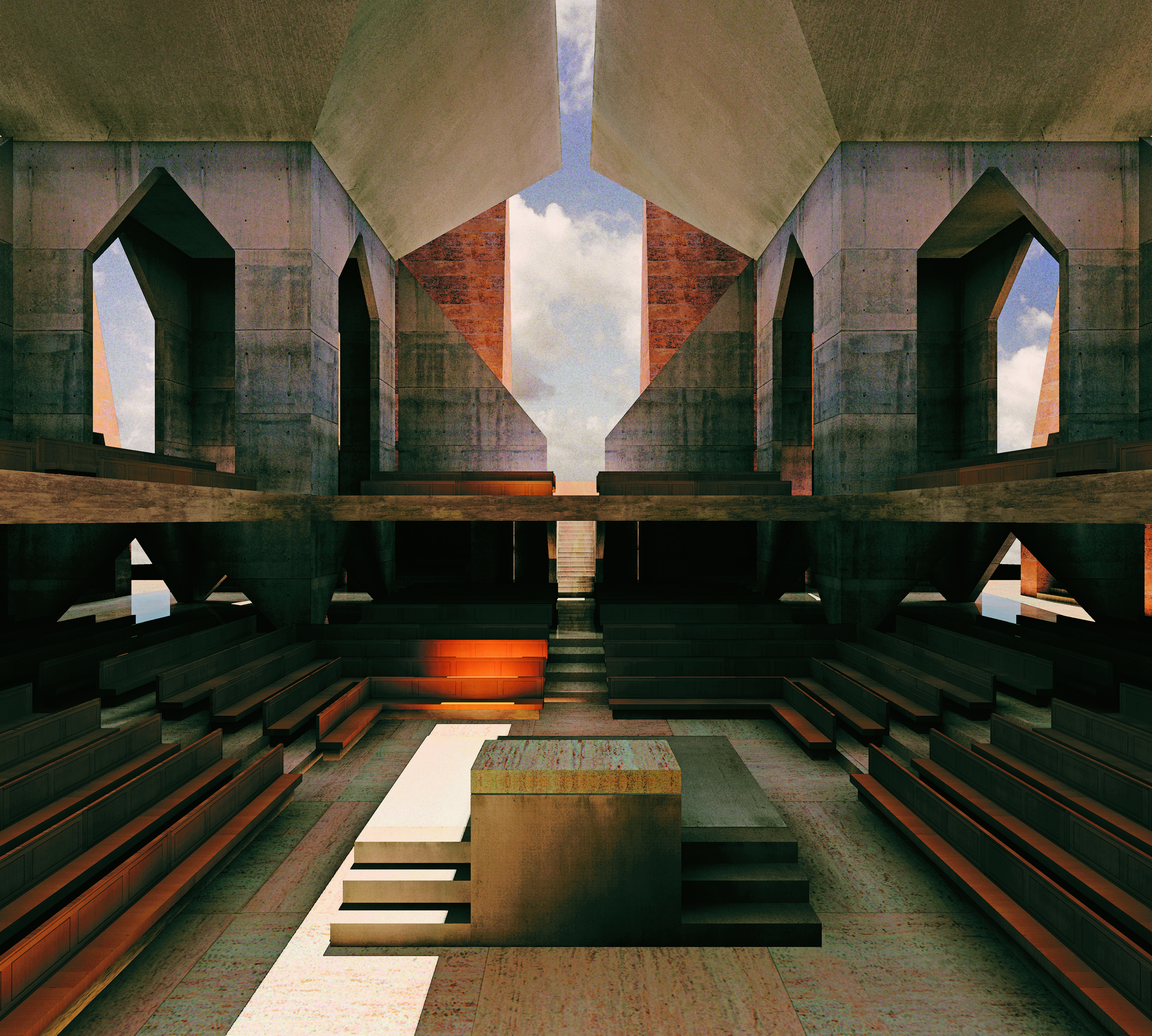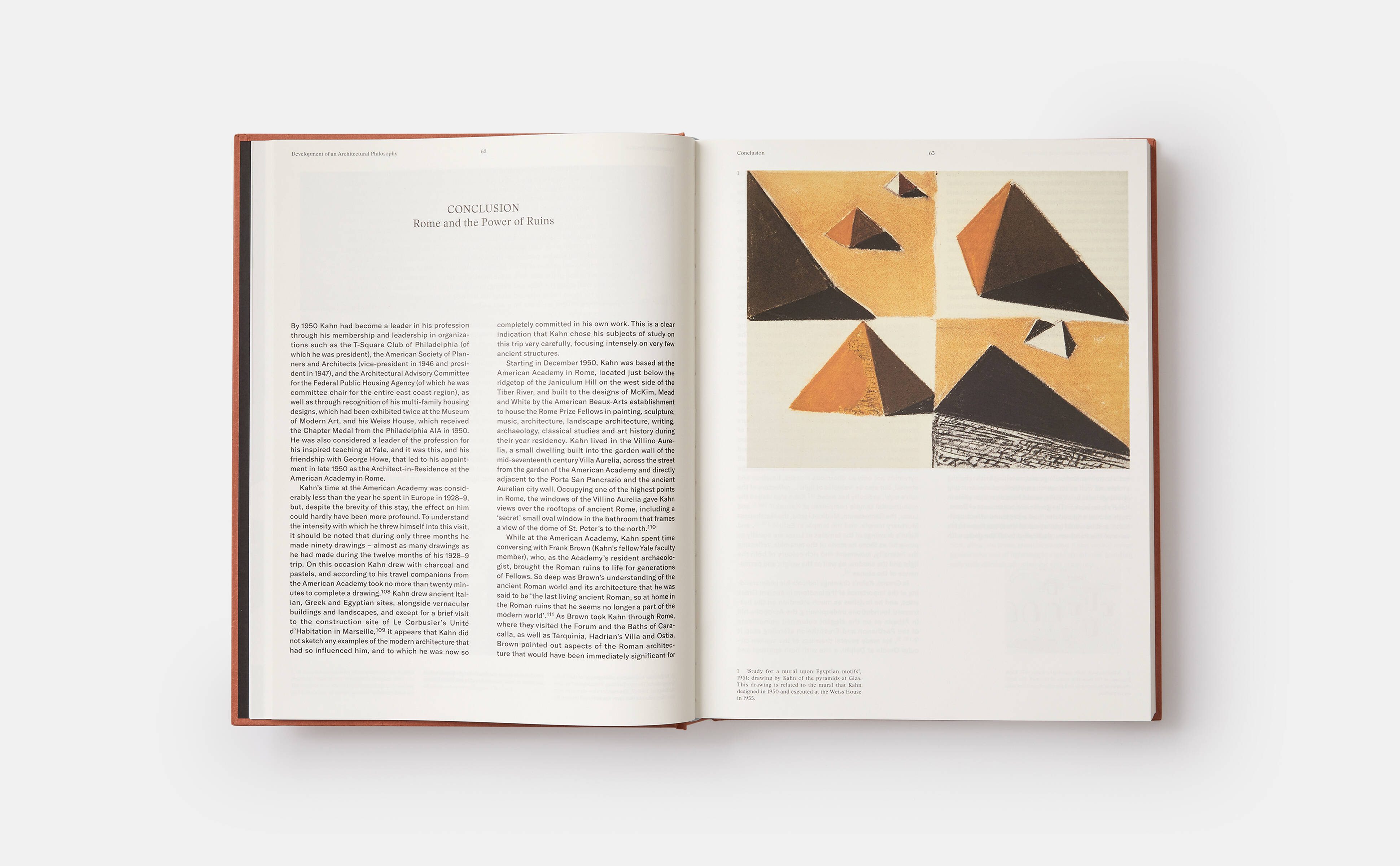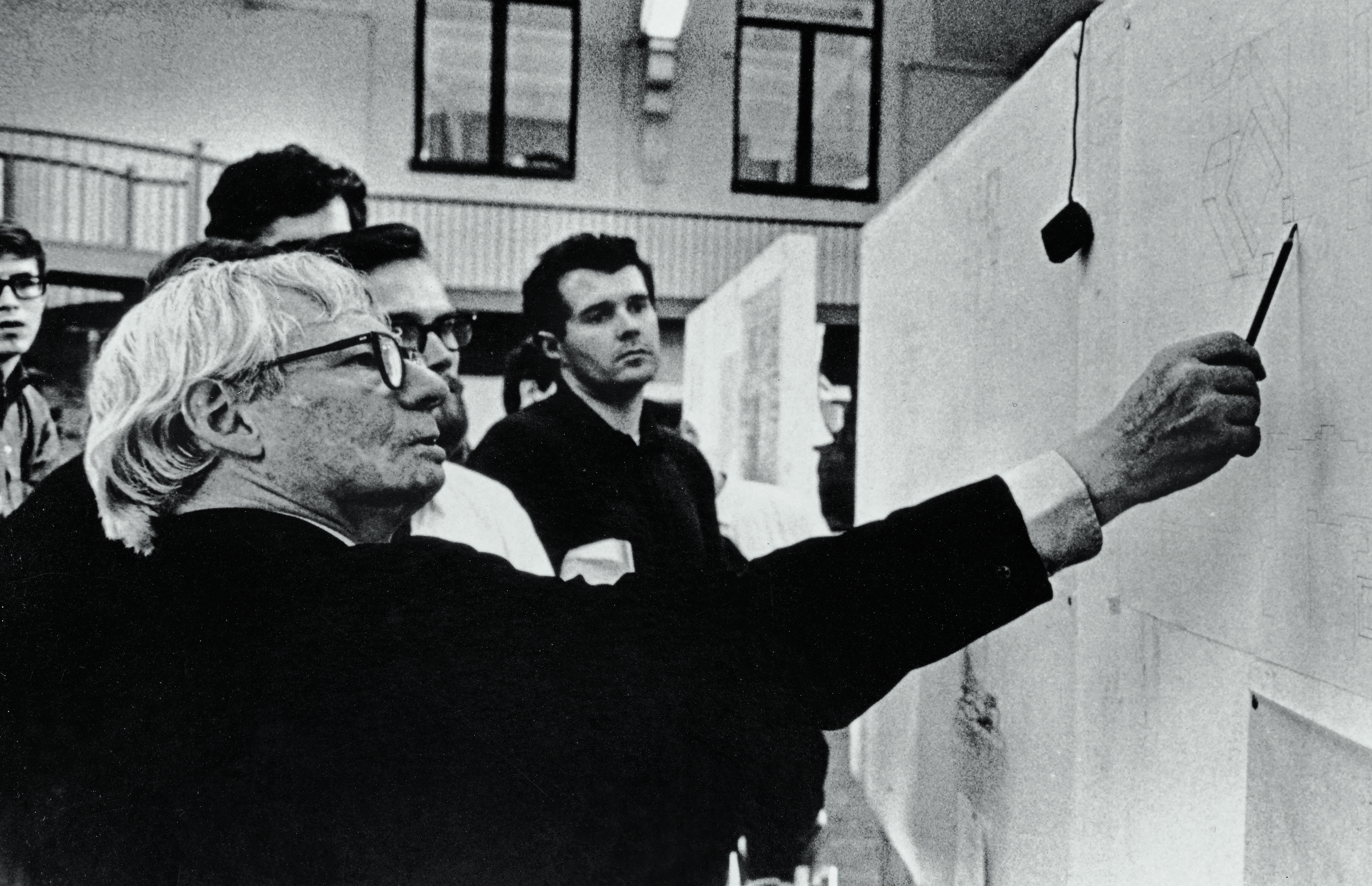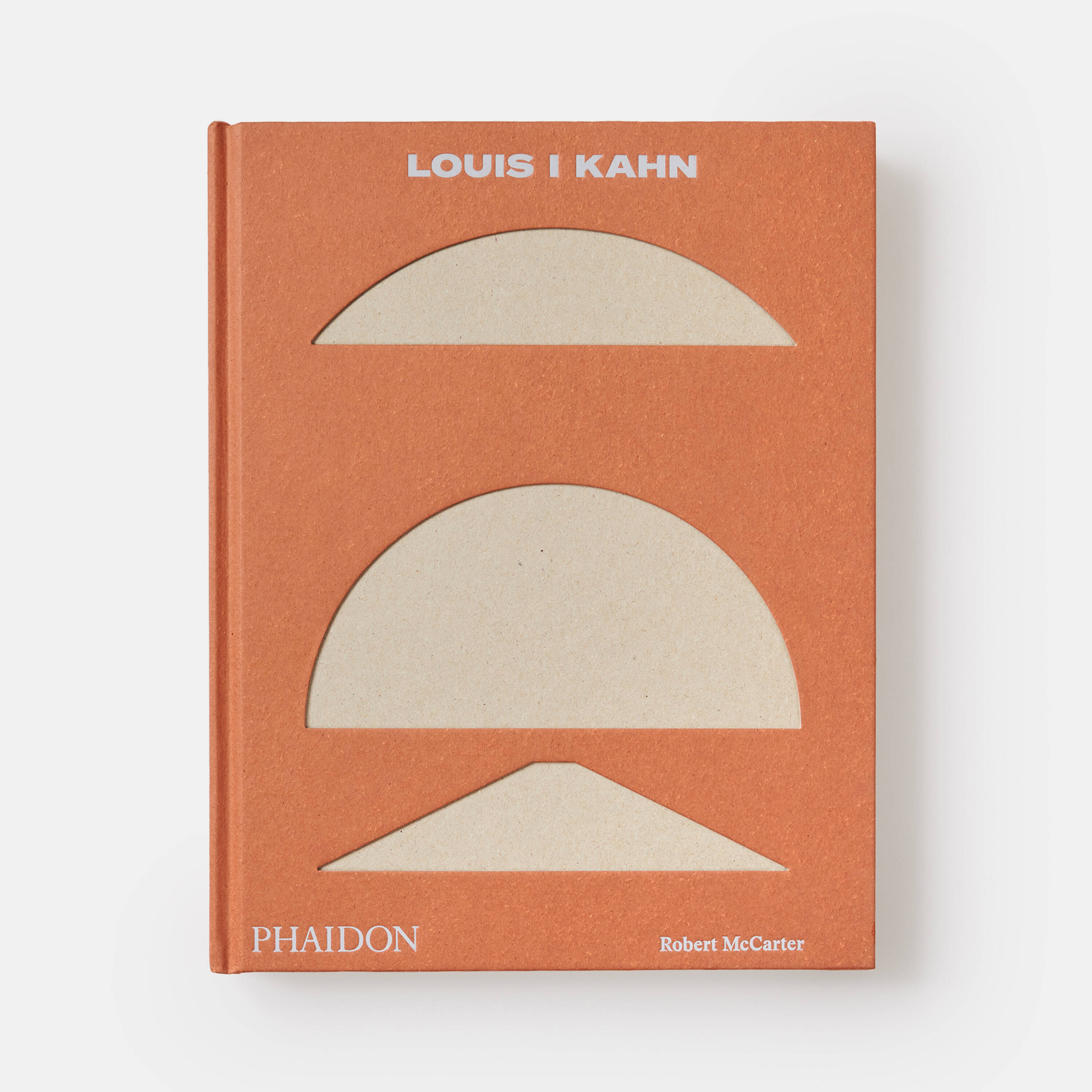
The spiritual Louis Kahn
Our new book describes some surprising sympathies held by the secular architect
Towards the end of his life, the secular Jewish architect Louis Kahn was commissioned to design the Graduate Theological Union Library at Berkeley in California. At the time, Kahn admitted that though he was building a library for all religions, he wasn’t much of a religious scholar himself. “I can’t speak about religious sects,” the architect explained in the autumn of 1973, “I just know the Catholics, the Jews and the Moslems – I have a vague idea of the various sects. But I don’t have a vague idea about religion itself. I feel conversed with religion as a very sacred part of the intimate.”
That sacred, intimate sentiment served Kahn well throughout his career. Kahn worked on numerous religious buildings, including the First Unitarian Church and School in Rochester, New York; mosques within his grand plan for the Bangladesh National Capital; and a chapel, a refectory, schoolrooms, dormitories and other buildings in his (unbuilt) plan for the Dominican Motherhouse of Saint Catherine de Ricci in Pennsylvania.
Yet perhaps his most significant religious project was the Hurva synagogue in Jerusalem, which the architect worked on from 1967 until 1974, the year that he died. Here’s how Robert McCarter describes the commission in his newly updated monograph on the architect. “The Synagogue, called Hurva, ‘ruin’ in both Hebrew and Arabic, had occupied a prominent site on a hilltop of the old Jewish Quarter to the west of the Temple Mount, with its Western Wall, upon which was located the Muslim Dome of the Rock Mosque, with the Christian Church of the Holy Sepulchre to the north of the Hurva site – two of the most important religious monuments in the world,” McCarter writes. “Originally built at the beginning of the eighteenth century and demolished shortly after, resulting in its name, the Hurva was rebuilt in the nineteenth century, only to be destroyed again in 1948 during the war that led to the founding of the modern state of Israel. In 1967, immediately following the Israeli army’s capture of the Old City of Jerusalem, the Israeli architect, Ram Karmi, was approached to build a new synagogue on the site of the previous Hurva. However, at the urging of his sister, Ada Karmi, who was studying architecture at Columbia University, Karmi recommended that Kahn be offered the commission.”
Despite being a modern architect belonging to no particular faith, ruins and religion appealed to Kahn. He had visited, sketched and appreciated ancient Egyptian temples, and Greek and Roman religious sites such as the Pantheon; he had also studied other churches, mosques and temples.

Pages from Louis I Kahn reproducing the architect's sketches of the Pyramids
In a 1944 essay entitled Monumentality, the architect expressed a yearning for a spirituality lacking in modern architecture. “Kahn argued that modern society had failed to give full architectural expression to the institutions of human community,” writes McCarter, “and he pointed to the great monuments of the past which, while not possible or appropriate literally to duplicate, nevertheless embodied the qualities by which all new buildings should be measured.”
However, Kahn didn’t believe architects should simply recreate old, monumental, spiritual buildings to service today’s needs. “No architect can rebuild a cathedral of another epoch embodying the desires, the aspirations, the love, and hate of the people whose heritage it became,” Kahn argued. “Therefore the images we have before us of monumental structures of the past cannot live again with the same intensity and meaning. Their faithful duplication is unreconcilable. But we dare not discard the lessons these buildings teach for they have the common characteristics of greatness upon which the buildings of our future must, in one sense or another, rely.”

Louis Kahn teaching graduate architectural studio, University of Pennsylvania, USA, c.1967. Photo by Eileen Christelow
In his work on the Hurva Synagogue, Kahn relied on the lessons taught by these older buildings. McCarter notes that the plans “related to Kahn’s beloved Egyptian temples, documented in his powerful pastel sketches from 1951 of the temples at Edfu and Luxor. The massive masonry outer walls receiving the sunlight; the tapered ceiling form; the small lines of light falling from above; and the ‘non-directional space, where only inspired worship can take place’, are undoubtedly related to the Pantheon, Kahn’s favourite reference – one he made even more explicit in the third version of the Hurva Synagogue in 1973, where he opened a square oculus at the centre of the sanctuary roof,” McCarter goes on.
“The Romanesque church at Périgueux, with its hollow, free-standing clusters of four piers supporting the roof vaults, drawn in Choisy’s Histoire, was also evidently related to Kahn’s design. Frank Lloyd Wright’s Unity Temple is again present in Kahn’s thinking, not only in the general plan form of cruciform and square but also in the dimensions, such as the Hurva Synagogue’s 32 foot (9.7 metre) square central chamber and the 64 foot (19.4 metre) square of the sanctuary and balconies, both of which are close to the inside edge dimensions of the equivalent spaces in Unity Temple.”
It’s a beautiful, deeply spiritual design, but one that ultimately remained unbuilt. Jerusalem’s mayor, Teddy Kollek wrote to Kahn shortly before the architect’s death, expressing eagerness to start work on Hurva, but the project lost momentum following Kahn’s passing.
Instead (and in a direct opposition to Kahn’s plans) a recreation of a 19th century synagogue was completed on the site in 2010. The computer-generated renderings of the late architect’s plan, reproduced extensively in McCarter’s book, remain a tantalising taste of how religion and ruins, monumentality and modernity might have come together to satisfy a contemporary spiritual thirst.

Louis I Kahn
To find out more about the life and architectural loves of Louis Kahn, order a copy of our newly revised and expanded Louis I Kahn book here.